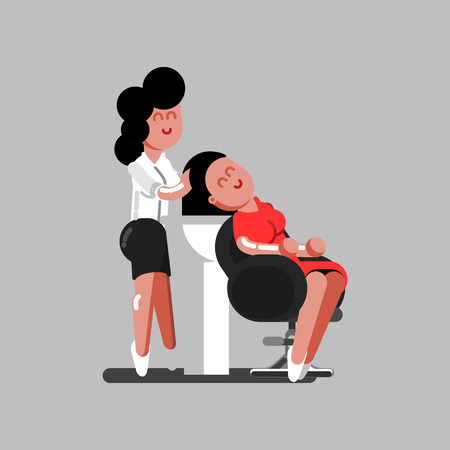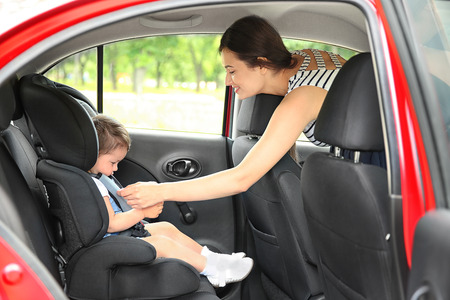Introduction to Car Seat Safety
Car seats are one of the most important tools parents and caregivers use to protect children during travel. When installed and used correctly, car seats can reduce the risk of injury or death in a crash by as much as 71% for infants and 54% for toddlers, according to the National Highway Traffic Safety Administration (NHTSA). However, studies show that nearly half of all car seats in the U.S. are installed incorrectly, putting children at unnecessary risk.
Understanding the importance of proper car seat installation is crucial for every parent and caregiver. Even small mistakes—like a loose harness or using the wrong seat for your child’s age and size—can greatly reduce a car seat’s effectiveness in an accident.
Why Proper Installation Matters
A correctly installed car seat:
- Keeps your child securely fastened during sudden stops or collisions
- Reduces the chance of serious injury
- Ensures your child is traveling in a position that’s safest for their size and age
Common Car Seat Mistakes in the U.S.
| Mistake | Description | Estimated Frequency* |
|---|---|---|
| Loose Installation | The car seat moves more than 1 inch side-to-side or front-to-back at the belt path | 59% |
| Incorrect Harness Positioning | Harness straps are too loose or not at the correct height for the child | 34% |
| Wrong Seat for Age/Size | Child is placed in a seat that doesn’t fit their age, weight, or height requirements | 21% |
| Improper Use of Tether/Anchors | Tether strap not used when required, or attached incorrectly | 17% |
| *Source: NHTSA Child Passenger Safety Study, 2022 | ||
If you want to keep your little one as safe as possible, it’s vital to understand these common errors—and how to avoid them. In the following sections, we’ll break down each mistake and offer practical tips to ensure your car seat is always installed safely and securely.
2. Incorrect Harness Positioning
Why Proper Harness Positioning Matters
The harness is the key part of your child’s car seat that keeps them secure in a crash. If the harness straps are not at the right height or are too loose, your child might not be properly protected. Many parents unknowingly make mistakes with harness positioning, but with a few tips, you can keep your little one safe on every ride.
Common Harness Errors
| Error Type | Description | Potential Risk |
|---|---|---|
| Straps Too High or Low | Harness slots are above or below the recommended position for the child’s size and seat direction. | Increased risk of injury during an accident. |
| Loose Harness Straps | Straps have slack and do not fit snugly against the child’s body. | Child could slip out or move too much in a crash. |
| Bunched or Twisted Straps | The harness is twisted or not flat against the child’s chest and shoulders. | Reduces effectiveness of restraint system. |
How to Adjust Harness Height Correctly
The correct harness height depends on your child’s size and whether they are using a rear-facing or forward-facing seat. Here’s a simple guide:
| Seat Direction | Correct Harness Position |
|---|---|
| Rear-Facing Seat | Harness straps should be at or just below your child’s shoulders. |
| Forward-Facing Seat | Harness straps should be at or just above your child’s shoulders. |
Tips for Checking Harness Tightness and Fit
- Pinch Test: Buckle and tighten the harness, then try to pinch the strap at your child’s shoulder. If you can pinch any fabric, it’s too loose—tighten until snug.
- No Bulky Clothing: Remove thick coats or blankets before buckling up; these can create dangerous slack in the harness.
- Smooth Straps: Make sure all straps lie flat and aren’t twisted for maximum protection.
- Regular Checks: As your child grows, frequently check and adjust the harness height according to their current size and car seat instructions.

3. Improper Use of Seat Belts or LATCH System
When installing a car seat, choosing between the vehicle’s seat belt and the LATCH (Lower Anchors and Tethers for Children) system can be confusing. Both are designed to secure your child’s car seat, but using them incorrectly is a common mistake among parents and caregivers.
Common Issues with Seat Belt Installation
- Misrouting the seat belt: Threading the seat belt through the wrong path on the car seat can lead to an unstable installation.
- Not locking the seat belt: Many vehicles require you to lock the seat belt manually after tightening. If this step is missed, the car seat may shift during a crash.
- Loose installation: Failing to pull the seat belt tight enough can allow excessive movement of the car seat.
Common Issues with LATCH Installation
- Using both LATCH and seat belt together: Most manufacturers recommend using only one system at a time—either LATCH or seat belt, not both (unless stated otherwise in your car seat manual).
- LATCH weight limits: Exceeding the combined weight limit (child plus car seat) for LATCH anchors can reduce crash protection. Always check your vehicle and car seat manuals for specific limits.
- Incorrect anchor attachment: Accidentally attaching to non-LATCH hardware or not fully securing the connectors can result in improper installation.
When to Use Seat Belt vs. LATCH
| Seat Belt | LATCH System | |
|---|---|---|
| Best For | All vehicles; especially when LATCH weight limits are exceeded | Younger children within weight limits; easier access in newer cars |
| Main Advantage | No weight limit except for car’s max seating capacity; universally available | Simplifies installation; reduces chance of misrouting |
| Main Drawback | Easier to misroute or leave unlocked | Weight limits; not available in all seating positions or older vehicles |
| How to Check Installation | Pulled tight with no more than 1 inch of movement side-to-side or front-to-back at the belt path; belt locked properly | LATCH straps attached securely and tightened so there’s no more than 1 inch of movement at the base; connectors properly fastened to lower anchors |
Troubleshooting Tips for Correct Use
- Always read both your car seat and vehicle owner’s manuals before installing.
- If unsure, use whichever method allows you to install the car seat most tightly—never both at once unless your manual says it’s safe.
- If your child outgrows the LATCH system by weight, switch to using the vehicle’s seat belt for installation.
- If you’re struggling with installation, seek help from a certified Child Passenger Safety Technician (CPST).
4. Rear-Facing vs. Forward-Facing Confusion
Understanding When to Make the Switch
One of the most common car seat installation mistakes in the U.S. is turning a child’s car seat forward-facing too soon. There’s a lot of confusion about when it’s safe to make the switch, and outdated advice from friends or family members can add to the uncertainty.
The American Academy of Pediatrics (AAP) Guidelines
The AAP strongly recommends that children ride in a rear-facing car seat as long as possible—until they reach the highest weight or height allowed by their car seat manufacturer. This is because rear-facing seats provide better support for your child’s head, neck, and spine during a crash.
Common Misconceptions About Rear-Facing Seats
- “My child’s legs look cramped.” – It might look uncomfortable, but kids are flexible and sitting cross-legged or with bent legs is perfectly safe.
- “My child wants to see more.” – Safety should always come first. You can offer soft toys or mirrors made for rear-facing seats to keep your child entertained.
- “I turned my older child at 1 year old, so I can do the same now.” – Recommendations have changed. Keeping kids rear-facing longer is now known to be much safer.
When Can My Child Face Forward?
| Childs Age | AAP Recommendation |
|---|---|
| Under 2 years | Always rear-facing unless they outgrow the seat limits |
| 2 years and older | Keep rear-facing until reaching car seats maximum height/weight limit |
If you’re unsure about your car seat’s specific limits, check the label on your seat or the manufacturer’s manual. Every car seat is different!
Key Takeaway:
Your child is safest riding rear-facing for as long as possible. Double-check your car seat’s guidelines and follow AAP recommendations to help keep your little one protected on every ride.
5. Loose Car Seat Installation
Why Is a Loose Car Seat Dangerous?
A loosely installed car seat can significantly reduce its ability to protect your child in an accident. If the seat moves too much, it won’t properly absorb impact forces or keep your little one securely in place.
Common Causes of Loose Installation
| Problem | Description |
|---|---|
| Not tightening seat belt or LATCH enough | The car seat wiggles more than 1 inch side-to-side or front-to-back at the belt path. |
| Incorrect use of locking mechanism | Seat belt not locked, or LATCH connectors not clicked in fully. |
| Twisted belts or straps | Belt or LATCH strap is twisted, reducing effectiveness and causing looseness. |
| Using both seat belt and LATCH (when not allowed) | This can sometimes cause improper tension and a loose fit. |
Step-by-Step Solutions for a Snug Fit
- Check the Movement: After installation, grab the car seat at the belt path. Try to move it side-to-side and front-to-back. It shouldn’t move more than 1 inch.
- Tighten the Belt or LATCH: If the seat is loose, press down firmly on the car seat (use your knee if needed) while pulling the seat belt or LATCH strap as tight as possible.
- Lock the Seat Belt: For most vehicles, pull the seat belt all the way out to switch it to locking mode, then feed it back in while keeping tension.
- Straighten Twisted Straps: Make sure there are no twists in the vehicle belt or LATCH strap; even small twists can prevent a snug install.
- Choose One Installation Method: Use either the vehicle’s seat belt or the lower anchors (LATCH), unless your car seat manufacturer specifically allows both.
- Double-Check Your Work: Give another firm shake at the base. Remember: less than 1 inch of movement at the belt path means you’re good!
Troubleshooting Tips
- If you still can’t get a tight fit, try switching seating positions—sometimes a different spot in your backseat works better.
- If possible, remove headrests that push the car seat forward or prevent it from sitting flat.
- Your local fire station, police department, or certified Child Passenger Safety Technician (CPST) can help double-check your installation.
6. Not Using an Appropriate Car Seat for Age and Size
Why Choosing the Right Car Seat Matters
One of the most common mistakes parents make is not using a car seat that fits their child’s current age, weight, or height. Using the wrong type or size of car seat can put your child at risk in the event of a crash, as it may not provide the necessary protection. Car seats are specifically designed to meet the unique needs of children at different stages of growth. Outgrowing one stage and moving to the next too soon—or too late—can be dangerous.
Common Errors When Selecting a Car Seat
- Using an infant car seat for too long: Once your child exceeds the seat’s weight or height limit, it no longer provides adequate protection.
- Switching to a forward-facing seat too early: Rear-facing seats offer better head and neck support for young children. The American Academy of Pediatrics recommends keeping children rear-facing as long as possible, until they reach the highest weight or height allowed by their seat.
- Moving to a booster before ready: Booster seats are designed for older kids who have outgrown their forward-facing harnessed seat but aren’t big enough for a regular seat belt alone.
- Skipping the booster phase: Allowing your child to use only a seat belt before they fit properly can lead to serious injuries in a crash.
Guidelines for Choosing the Right Car Seat
The best way to select the right car seat is to follow both the manufacturer’s instructions and U.S. safety guidelines. Here’s a quick reference table based on age, weight, and height recommendations:
| Stage | Approximate Age | Weight/Height Limits | Description |
|---|---|---|---|
| Rear-Facing Only & Convertible Seats (Rear-Facing Position) | Birth – 2+ years | Up to 40 lbs (varies by model); until reaching max height/weight limit | Keeps infants and toddlers safest; always place in back seat |
| Convertible Seats (Forward-Facing with Harness) | 2+ years – at least 4 years | Up to 65 lbs (varies by model); until reaching max height/weight limit | Use when child outgrows rear-facing limits; keep harnessed as long as possible |
| Booster Seats | 4+ years – 8–12 years | Until 4’9” tall (usually 80–100 lbs) | Keeps seat belt positioned correctly across chest and lap; use until adult seat belt fits properly without booster |
| Seat Belt Alone | 8–12+ years | Taller than 4’9” (57 inches) | Belt should lie snugly across upper thighs (not stomach) and shoulder (not neck) |
Quick Tips for Parents and Caregivers:
- Always check your car seat manual: Each seat has its own set of height and weight limits—know yours!
- Avoid rushing transitions: Stay in each stage as long as possible within manufacturer limits.
- If unsure, get help: Certified Child Passenger Safety Technicians can help you choose and install the right seat.
- No secondhand guesses: Never use a car seat past its expiration date or if it has been in a crash.
7. Seeking Local Help and Resources
If you ever feel unsure about installing your child’s car seat, you’re definitely not alone! Across the United States, there are plenty of local resources ready to help parents and caregivers make sure their car seats are installed safely and correctly. Here’s how you can find the support you need:
Car Seat Inspection Stations
Many communities have designated car seat inspection stations. At these locations, certified technicians will check your installation and teach you how to use your seat properly—all free of charge. You’ll find inspection stations at places like:
- Fire departments
- Police stations
- Children’s hospitals
- Community centers
Certified Child Passenger Safety Technicians (CPSTs)
CPSTs are trained experts in car seat safety. They can answer your questions, show you the right way to install your car seat, and even help with tricky situations—like when your car or seat seems especially challenging. To find a CPST near you, visit the National Highway Traffic Safety Administration (NHTSA) website or Safe Kids Worldwide.
Where to Find Local Car Seat Help
| Resource | How They Can Help | Where to Find Them |
|---|---|---|
| Inspection Stations | Check and correct car seat installation; provide hands-on guidance | Fire/police stations, children’s hospitals, community events |
| Certified Technicians (CPSTs) | Personalized advice and demonstrations for all car seat types | NHTSA/Safe Kids websites, local health departments |
| Community Events | Free safety checks and educational workshops for families | Malls, libraries, fairs, public parking lots during special events |
| Pediatrician Offices & Hospitals | Information on safe travel for newborns and older children | Pediatric clinics, maternity wards, hospital classes |
Why Getting Local Help Matters
No matter how many videos or guides you read online, having a certified professional look over your work in person gives extra peace of mind. Plus, local technicians stay up-to-date on the latest safety recommendations and know about any state-specific laws or programs that could benefit your family.


